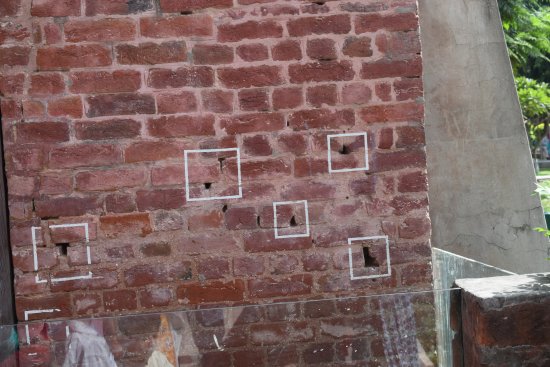SN Misra
On April 13, 1919, Colonel Reginald Dyer ordered firing at a crowd, which was completely innocent, peaceful and non-violent, and estimated at between 5,000 and 30,000, at the Jallianwala Bagh in Amritsar. He gave no prior warning. His personal bodyguard, Sergeant Anderson, later noted that the crowd “seemed to sink with the ground, with a whole flutter of white garments”. The squad of 50 fired 1,650 rounds non-stop for about 10 minutes, until the entire crowd had fled or fallen. The walls of the park still bear bullet holes. Two Gurkhas later remarked with evident relish: “While it lasted it was splendid.”
This dastardly act, which revulses every tourist who visits the monument, was investigated by the Hunter judicial enquiry committee in October 1919. The committee had five British and three Indian members, including the eminent jurist C Setalvad. The committee reported that 379 people were killed, and up to 1,200 were wounded.
Richard Attenborough’s famous biopic of Mahatma Gandhi has a highly emotive and largely fictional scene of the massacre. The reality is far more banal and heart-rending. Kim A Wagner’s ‘The Empire of Fear and the Making of a Massacre’ (2019) is far more poignant and fills a critical void in understanding conflicting perspectives of this great human tragedy. Perceval Spear, the historian, observes that “Jallianwala Bagh was a scar drawn across Indo-British relationship, deeper than any which had been inflicted since the mutiny of 1857. It became a remarkable signpost towards Indian Independence.”
During his prolonged examination by the Hunter Committee General Dyer was unrepentant, which exasperated even his firm supporter, Lt Governor O’ Dwyer, who thought his assertions at the enquiry were ‘indefensible’.
The British members in the Hunter Committee did not favour lack of notice and the length of firing. They thought it betrayed an error of judgement and overstepping of authority. The minority view was far more scathing. It referred to the proclamation banning the public meeting and said it was insufficiently distributed. It found repugnant that innocent people, who were not indulging in any violence in the Bagh, were fired upon.
Dyer’s action came up for discussion before the House of Commons July 8, 1920, where the resolution of censure was upheld by 230–179 votes. It was Churchill’s speech that tilted the scale against him when he said “it was a monstrous event, an event which stands in singular and sinister isolation”. The House of Lords, on the other hand, took the view that House of Commons was unjust to the officer.
‘The Morning Post’ launched a patriotic drive for funds for Dyer’s benefit, portraying him as victim. More than 26,000 pounds were raised. The butcher of Amritsar was given a full military funeral in 1927. Among the flowers was a wreath from Rudyard Kipling with a message “he did his duty as saw it”!
David Cameroon, then Prime Minister of Britain, visited Jallianwala Bagh in 2013 and wrote: “This was a deeply shameful event in the history of the British.”
The tragedy of 1919 must be understood as the dying gasp of an imperialist ideology. There is debate whether the massacre was the work of an isolated bigot or a reflection of racism that one associates with imperialism. Quite clearly the second proposition does not stand vindicated, as both Churchill and Curzon strongly condemned the barbaric action of Dyer.
The Rowlatt Act was quietly repealed. The British never used firepower on civilian mobs thereafter; even at the height of partition riots in 1947, in which Punjab witnessed the worst possible carnage, Sherwood, a victim of the 1919 riot, participated as a volunteer among refugees.
Wagner writes: “We are not responsible for the past, we are responsible for how we choose to remember or forget the past. And perhaps there are wounds that we should not attempt to heal.” The massacre of Amritsar cannot be erased by a demand for public apology on April 13, 2019. Violence has no place in a civilised society as Gandhi had always reminded the world. The scars of history cannot be erased.
The writer teaches modern Indian history.
